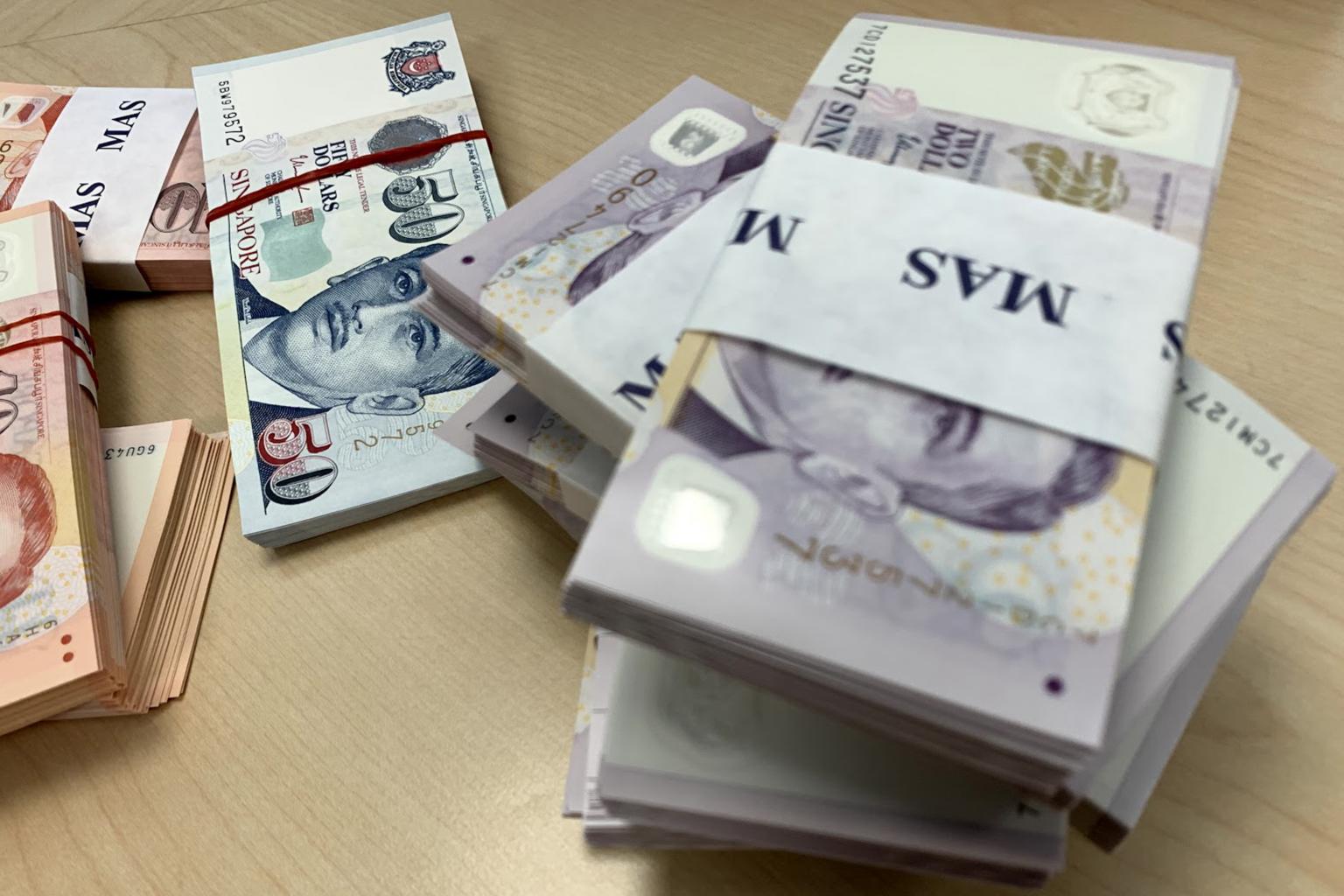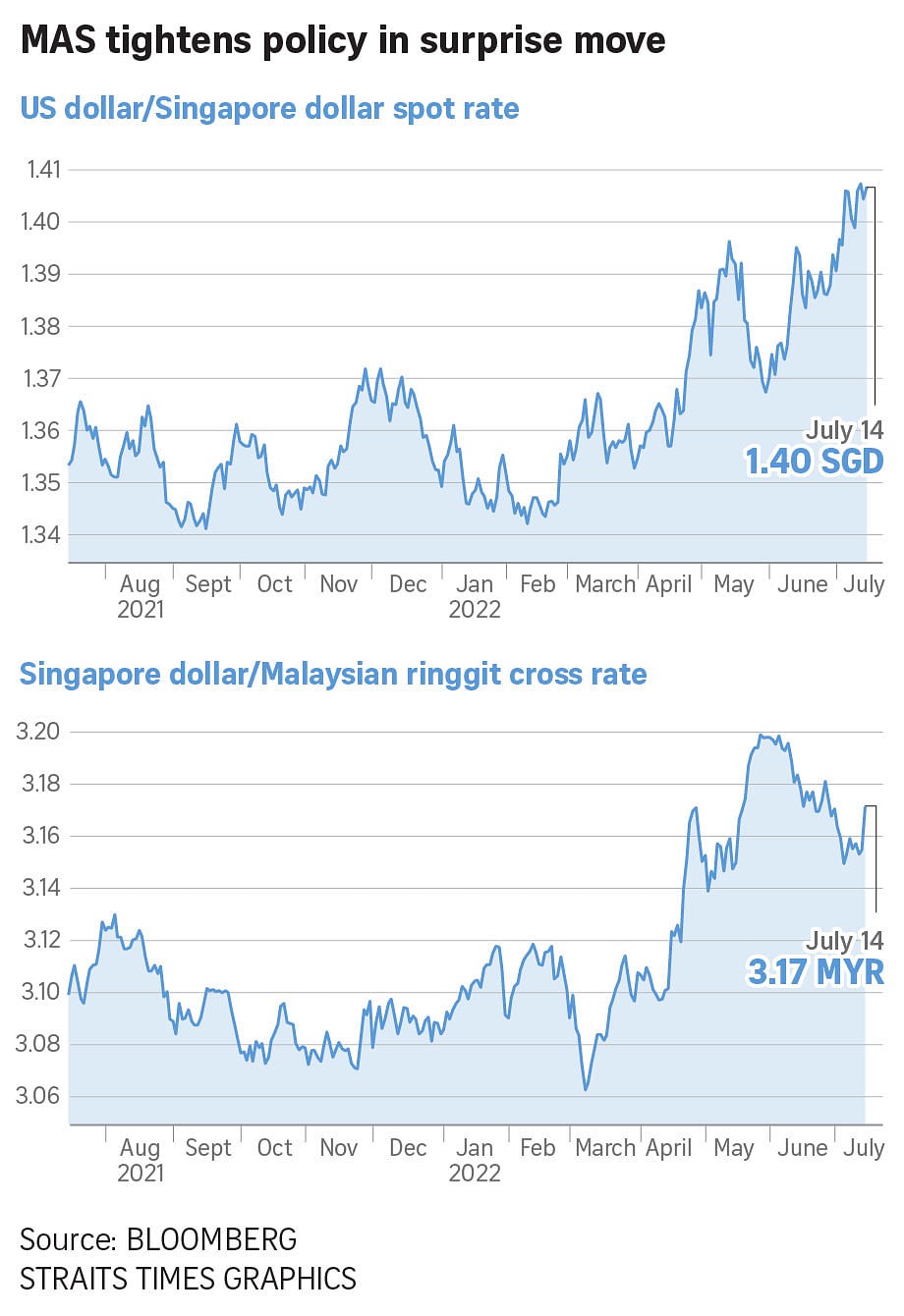Singdollar holds steady against US dollar, rises against peers after MAS surprise move
Sign up now: Get ST's newsletters delivered to your inbox

Despite Thursday's gains, the Singdollar is still down about 4 per cent against the greenback this year.
PHOTO: ST FILE
Follow topic:
SINGAPORE - The Singapore dollar was trading higher against most major currencies after the Monetary Authority of Singapore (MAS) surprised financial markets by tightening monetary policy on Thursday (July 14).
The Singdollar strengthened against the United States dollar, the euro, the yen and the ringgit following the second off-cycle move by the MAS this year.
It sent the local currency to 1.3934 to the US dollar - a rise of about 0.9 per cent - shortly after the announcement. It remains at the 1.40 level, meaning one US dollar buys you 1.40 Singdollars.
It is also higher against the Malaysian ringgit - at about 3.17 - but still shy of the 3.1986 high on May 26.
Despite Thursday's gains, the Singdollar is still down about 4 per cent against the greenback this year.
Economists said the MAS' latest move is an attempt to dampen imported inflation: A stronger Singdollar would potentially make imports cheaper and help to alleviate inflationary pressures that show no signs of abating.
Mr Song Seng Wun, economist at CIMB Private Banking, said: "It's really about food prices. Food prices have risen significantly over the last six months and MAS is trying to ensure that the exchange rate can help to keep imported food inflation at bay."
Singaporeans are certainly feeling the pinch.
Ms Audrey Wong, a 49-year-old employee of a non-profit organisation, said low-income families have resorted to eating canned or processed food and food nearing expiry, given the high prices.
Communications manager Kelly Chiew, 29, said tightening monetary policy to fight inflation is only a short-term solution, noting that food prices are still rising.
She believes attention should be diverted to strengthening Singapore's food security.
The spectre of surging inflation has prompted the MAS to move on currency policy four times since October. It normally moves every six months - in April and October - but has now made two out-of-cycle interventions, the first being in January.
Core inflation, the preferred price gauge used by the MAS, came in at 3.6 in May over the same month last year and approached a 14-year high.
Headline inflation also grew at a faster pace, touching 5.6 per cent year on year in May, the highest since November 2011.
Economists say there is still scope for the MAS to tighten further at its October meeting if inflation pressures persist.
Central banks around the world have also been on a tightening spree to fight inflation.
The US Federal Reserve has raised rates by 1.5 percentage points this year, Malaysia's central bank has lifted them to 2.25 per cent, the second increase this year, and the Philippines hiked them by 0.75 percentage points in a surprise move on Thursday.
Australia and New Zealand have also been lifting rates aggressively, while the European Central Bank is tipped to hike them by 25 basis points this month.
The Singdollar has been very resilient amid the flurry of tightening and has strengthened against the currencies of a few trading partners, said Ms Selena Ling, chief economist and head of treasury research and strategy at OCBC Bank.

Mr Peter Chia, senior foreign exchange strategist at UOB, said the Singdollar should continue to outperform its Asian peers in the light of Thursday's move and the expectation of further tightening from the MAS.
Economists are less sanguine about the Singdollar's outlook against the greenback as the US Fed has been the most aggressive in tightening policy among all central banks.
"It's very hard to go against the Fed. All the MAS can do is focus on tightening monetary policy," said Mr Khoon Goh, head of Asia research at ANZ.

